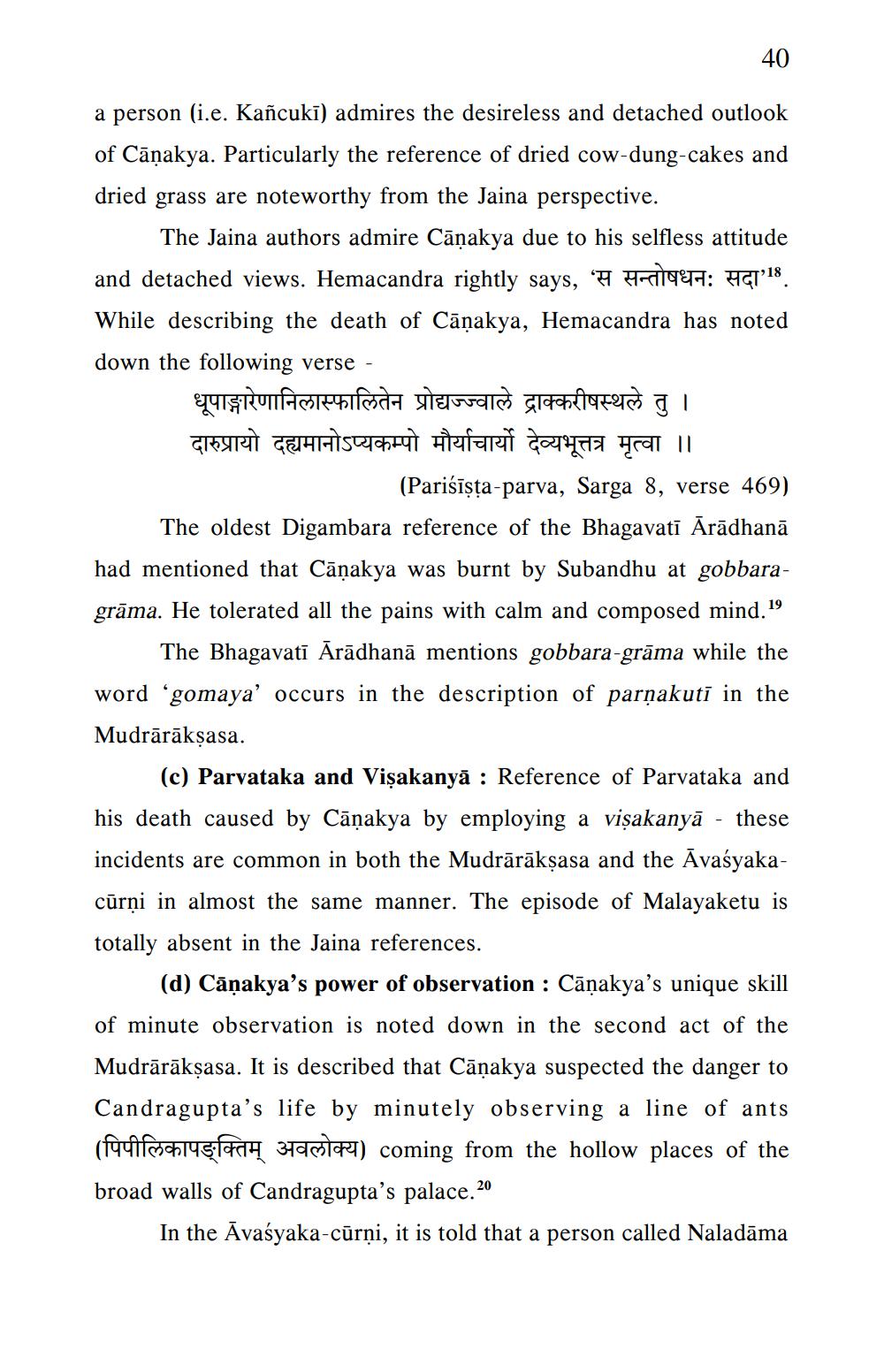________________
40
a person (i.e. Kañcukī) admires the desireless and detached outlook of Caṇakya. Particularly the reference of dried cow-dung-cakes and dried grass are noteworthy from the Jaina perspective.
The Jaina authors admire Cāṇakya due to his selfless attitude and detached views. Hemacandra rightly says,
'18
While describing the death of Caṇakya, Hemacandra has noted down the following verse
धूपाङ्गारेणानिलास्फालितेन प्रोद्यज्ज्वाले द्राक्करीषस्थले तु ।
दारुप्रायो दह्यमानोऽप्यकम्पो मौर्याचार्यो देव्यभूत्तत्र मृत्वा ॥
(Pariśīṣṭa-parva, Sarga 8, verse 469) The oldest Digambara reference of the Bhagavatī Ārādhanā had mentioned that Cāṇakya was burnt by Subandhu at gobbaragrāma. He tolerated all the pains with calm and composed mind. 19
The Bhagavati Ārādhanā mentions gobbara-grāma while the word 'gomaya' occurs in the description of parṇakuti in the Mudrārākṣasa.
(c) Parvataka and Viṣakanyā: Reference of Parvataka and his death caused by Caṇakya by employing a viṣakanyā - these incidents are common in both the Mudrārākṣasa and the Avaśyakacūrṇi in almost the same manner. The episode of Malayaketu is totally absent in the Jaina references.
(d) Caṇakya's power of observation : Cāṇakya's unique skill of minute observation is noted down in the second act of the Mudrārākṣasa. It is described that Cāṇakya suspected the danger to Candragupta's life by minutely observing a line of ants (पिपीलिकापङ्क्तिम् अवलोक्य) coming from the hollow places of the broad walls of Candragupta's palace.20
In the Avaśyaka-cūrņi, it is told that a person called Naladāma




